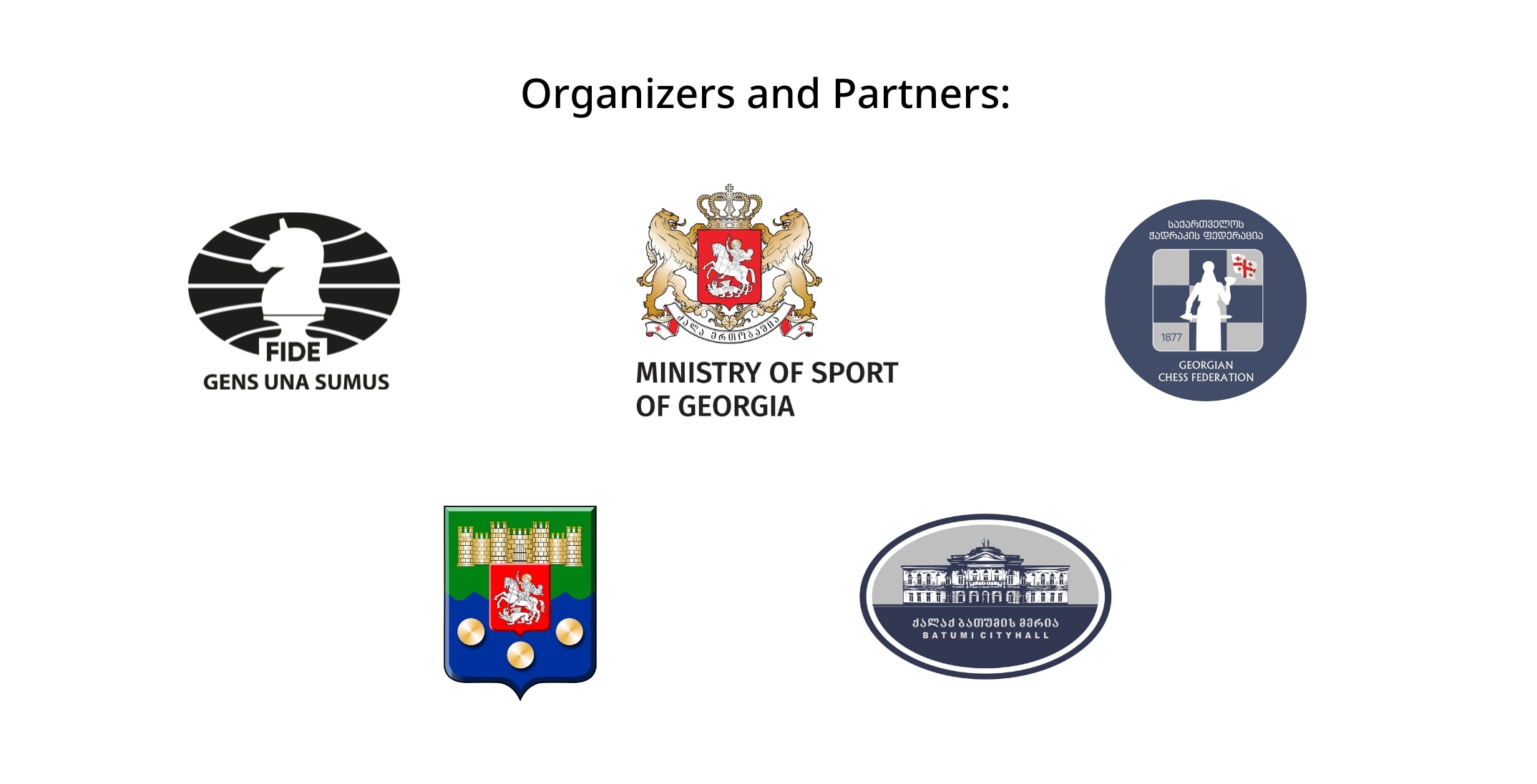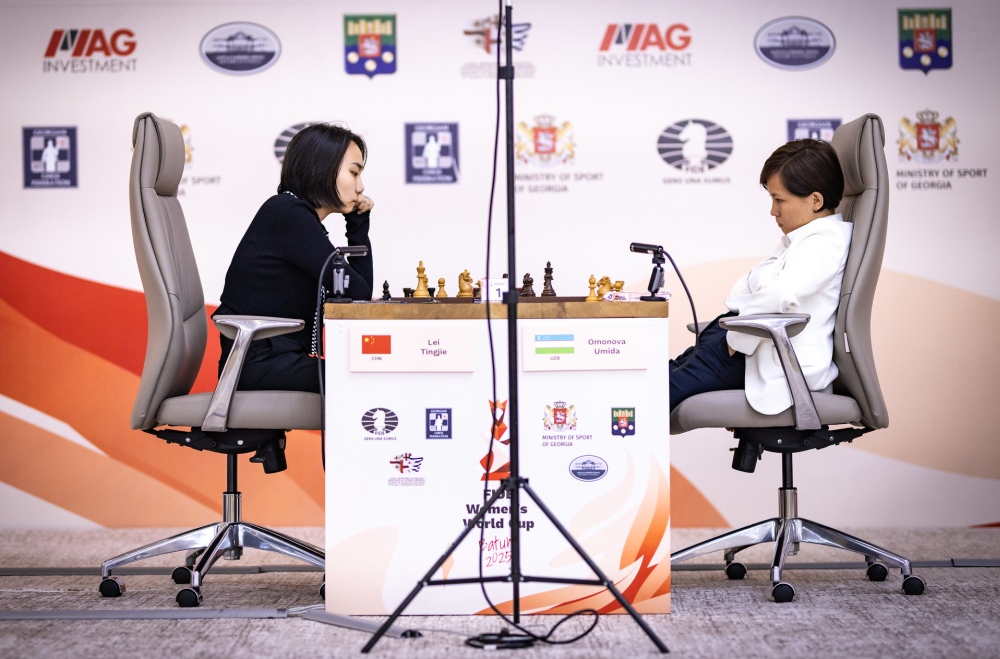
The four Indians head to tiebreaks tomorrow for quarterfinal spots
The second game of Round of 16 in the Women’s World Cup knockout stage brought plenty of excitement and high-stakes drama. Of the eight matches played, only two had a decisive result, while six ended in draws—pushing most of the action into tiebreak territory.
China’s top seeds, GM Lei Tingjie and GM Tan Zhongyi, continued their dominant run, qualifying directly for the quarterfinals without having played a single tiebreak so far. Joining them are GM Nana Dzagnidze and the tournament’s standout underdog, IM Song Yuxin, who punched her ticket to the final eight.
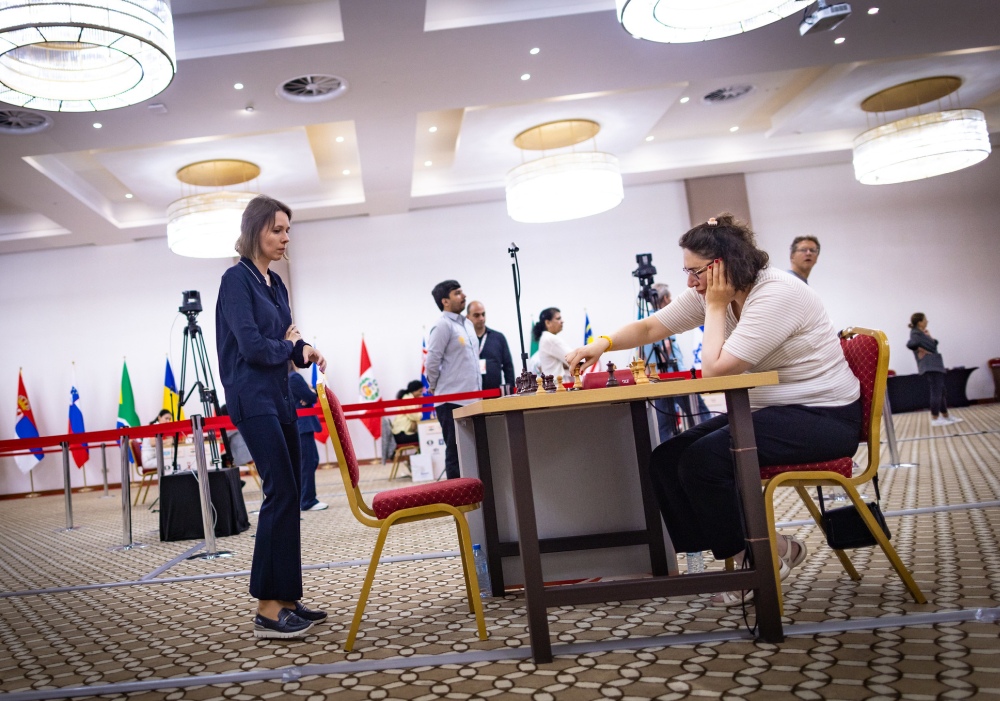
All eyes now turn to the four Indian contenders, who will return tomorrow for what promises to be a thrilling round of tiebreaks. With a major prize increase and a coveted quarterfinal slot at stake, the pressure couldn’t be higher.
Let’s take a closer look at how this afternoon’s games unfolded…
Needing a win to force a tiebreak, WIM Umida Omonova opened with 1.e4, clearly signaling her intent to fight. GM Lei Tingjie, however, set aside her usual 2…Nc6 repertoire and instead opted for the ultra-solid Petroff Defense—an opening that’s become a hallmark of China’s top players.
While Omonova was unable to gain any tangible advantage out of the opening, she remained persistent, pressing throughout the game and staying alert for any slip from her experienced opponent.
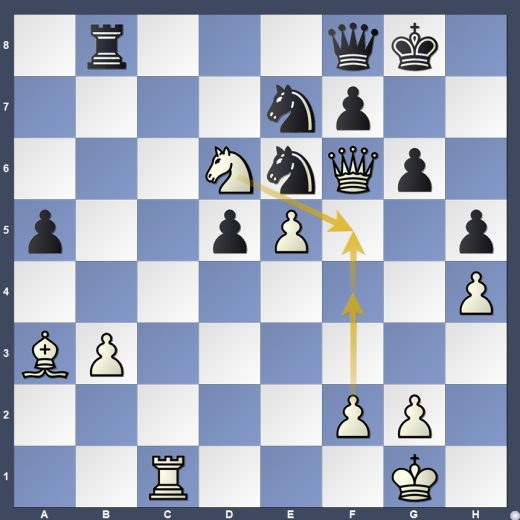
In the position, 40.Nf5? was indeed a pivotal mistake—especially painful given that Omonova had ample time on the clock. The preferred continuation, 40.f4! Rxb3 41.f5!, would have launched a powerful kingside initiative, tying down her opponent’s pieces and maintaining strong winning chances.
Missing this moment cost her not only the advantage but ultimately the game, which ended in a perpetual check — a common escape route in high-stakes matches when one side falters.
Despite this, Omonova’s postgame attitude was strikingly mature. Rather than dwell on the missed opportunity, she looked ahead with determination, expressing her focus on upcoming competitions and her long-term goal of becoming World Champion. This mindset is critical at the elite level, where resilience often defines careers more than individual victories or defeats.
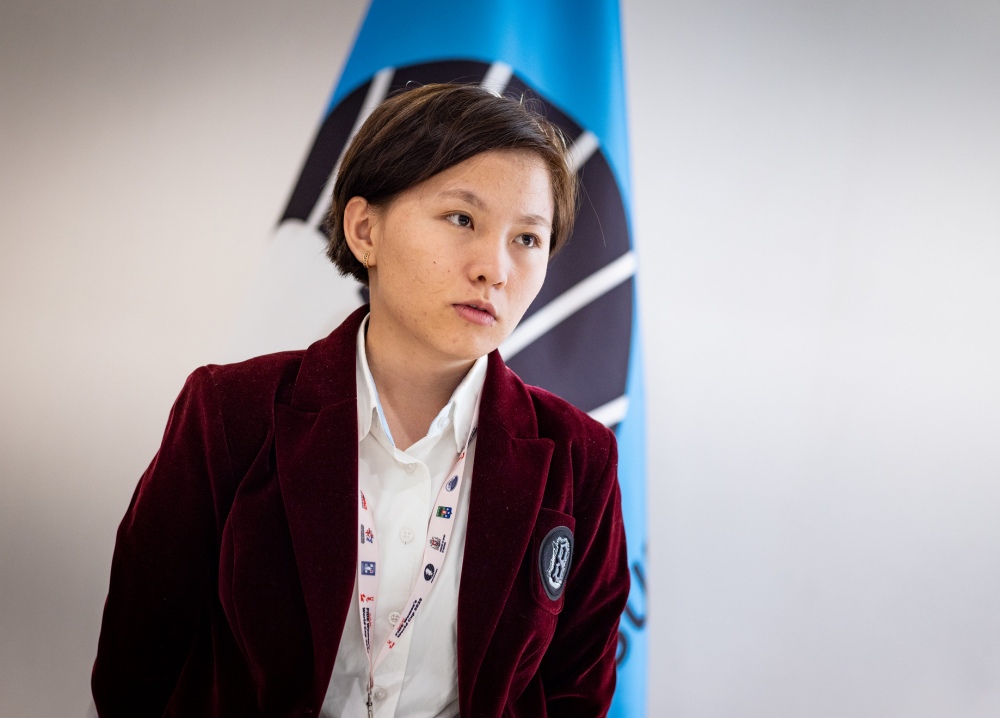
IM Divya Deshmukh generally plays the Sicilian defence with Black but the open games with 1…e5 have always been considered a safer option when a draw is a good result.
GM Zhu Jiner opted for the Mieses variation of the Vienna Game, a subtle and less mainstream attempt to sidestep heavy theory and provoke imbalances in quieter waters. Zhu had only played this line twice before (in 2018), suggesting this was a prepared surprise weapon. The choice may have been strategic, targeting Divya’s lack of familiarity in this specific line.
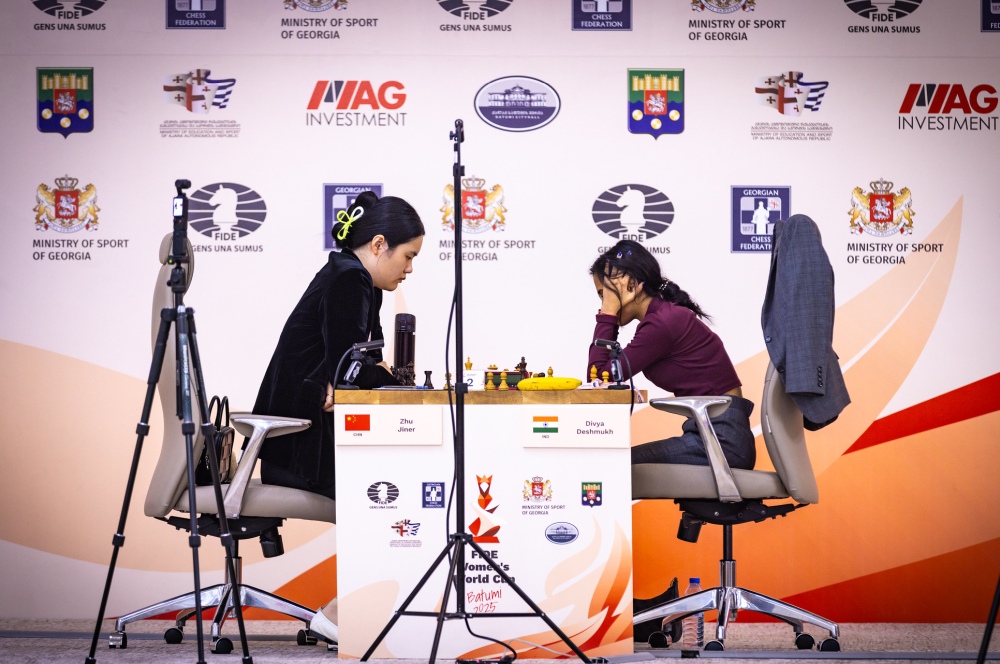
In fact, Divya had only faced it once, against GM Anton Korobov in Tata Steel 2014, a game which she lost. Overall, this was a smart psychological and strategic decision by Zhu—taking Divya out of her comfort zone (the Sicilian), steering the game toward less familiar terrain, and possibly exploiting a weak spot in her repertoire.
Both players blitzed out the opening, showcasing deep preparation and high-level understanding—even in this relatively obscure side-line. It’s remarkable to consider the sheer volume of opening theory top players must internalize to perform at this level.
Once the queens were exchanged, it became apparent that Zhu Jiner had a deeper grasp of the resulting position than her opponent. As the game transitioned into a complex multi-piece endgame, Zhu emerged with a clear advantage.
Demonstrating excellent endgame technique and playing with 96% accuracy, she skillfully converted her edge into a full point, forcing the tiebreak. After the game, Zhu Jiner joined us in the media center and shared her reflections on her performance.
After yesterday’s solid draw, GM Nana Dzagnidze’s plan this afternoon was to play solidly and try to press. “I have played more than 50 games against GM Mariya Muzychuk,” she explained in her postgame interview. “But today she surprised me with an opening she has never played before.”
Despite the surprise factor, the strategy backfired. Nana Dzagnidze calmly seized a pawn, traded down to a simplified position, and showcased superb endgame technique to secure the full point—effectively dodging the need for tomorrow’s tiebreaks.
Though visibly fatigued, Dzagnidze graciously stopped by the press room afterward, offering a quick masterclass on converting a pawn advantage in the endgame. A lesson well worth staying awake for!
GM Lela Javakhishvili’s choice of a reversed King’s Indian Defence as White shows a fighting spirit—it’s an aggressive and somewhat unorthodox weapon, especially when playing for a must-win.
However, IM Song Yuxin’s cool handling of the position—equalising early and seizing the initiative—speaks volumes about her underrated strength. To not just neutralize an aggressive setup but also take over in the center and queenside implies deep understanding and precise calculation.
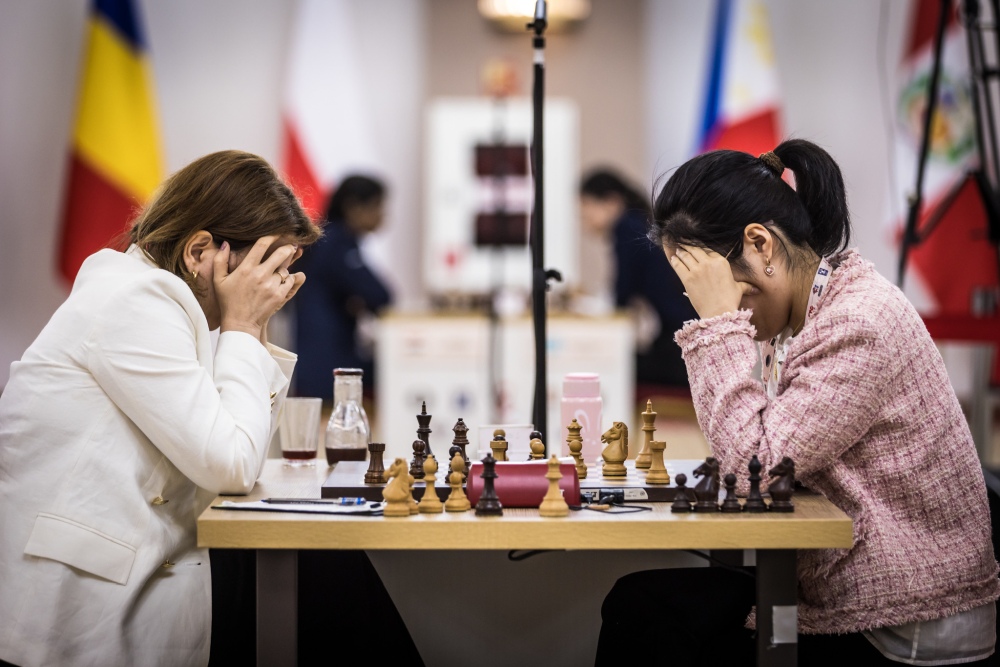
As she was in a must-win situation, Lela pushed her kingside pawns, trying to create winning chances. This aggressive strategy backfired, costing her a pawn. Song then got the upper hand and could have played for a win, but instead, offered a draw from the position of strength, which was accepted by Lela — a decision that helped Song qualify for the next round.
In a classical Neo-Grunfeld Defence, IM Yuliia Osmak sacrificed a full pawn in the opening in exchange for a strong pawn centre and active piece play. The line has a decent reputation and has been favoured by elite players such as GM Shakhriyar Mamedyarov.
Osmak launched a fierce kingside attack, ultimately winning an exchange for a pawn — a promising advantage for the Ukrainian player, who needed a victory to level the score.
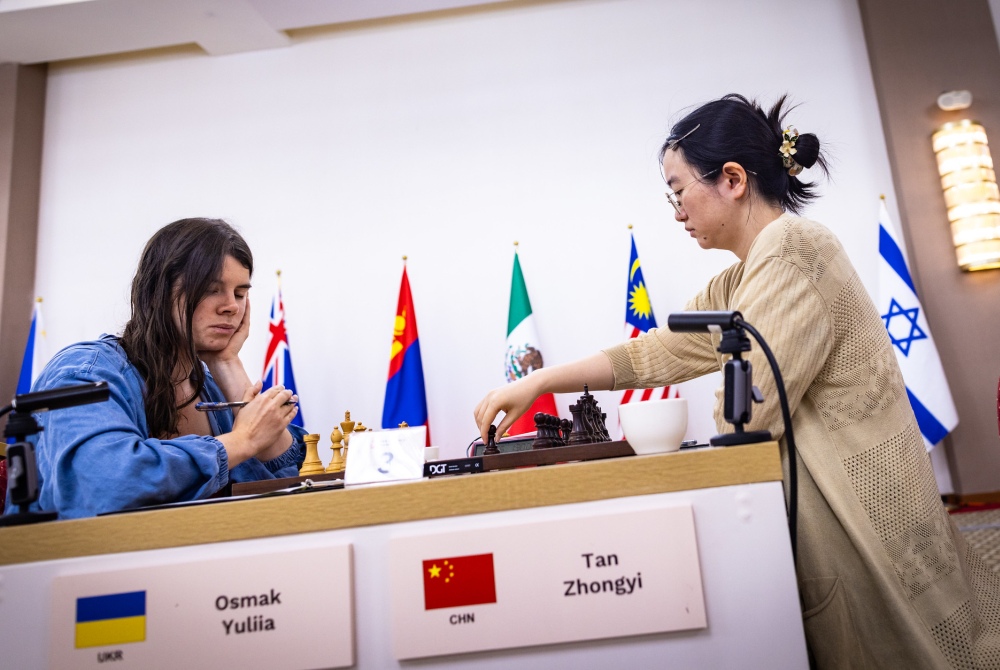
However, GM Tan Zhongyi, drawing on her vast experience at the highest level, expertly defended her position and maintained equilibrium. After a tense battle, the players agreed to a draw on move forty, splitting the point.
GM Humpy Koneru secured a slight positional advantage early on in a classical Bogo-Indian Defense facing Alexandra Kosteniuk. She steadily increased the pressure, and over time, her advantage grew significantly.
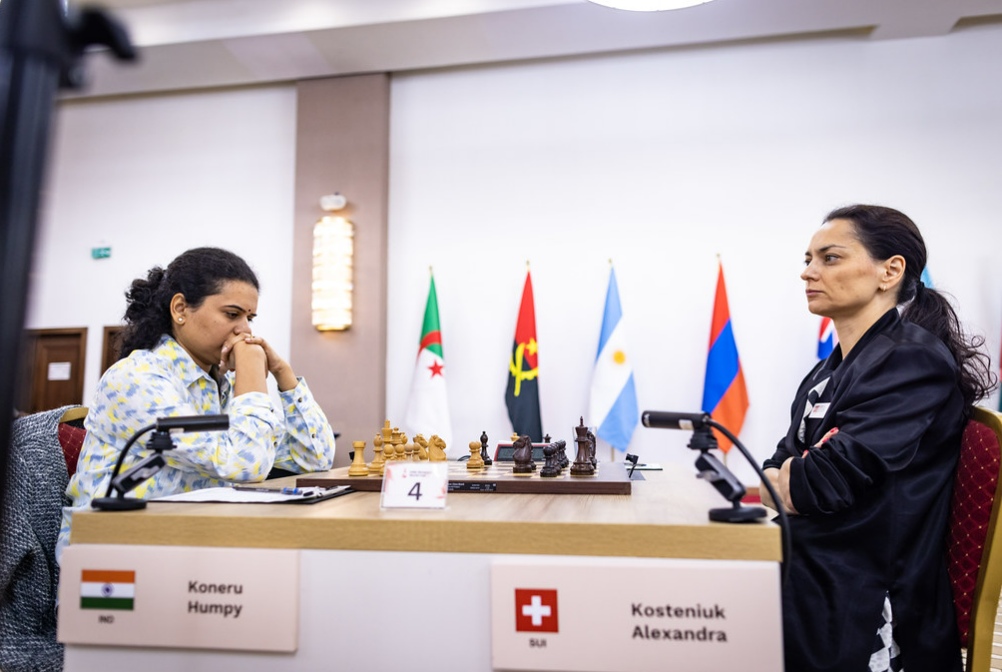
However, alongside her formidable attacking skills, GM Alexandra Kosteniuk demonstrated exceptional defensive resilience. She managed to neutralize the threats, maintaining her composure and even nurturing the possibility of a counterattack.
In the end, another draw adds to their personal legacies, and the battle for a spot in the quarterfinals will continue tomorrow afternoon in the rapid and blitz tiebreaks — formats in which both are World Champions (with Humpy claiming the rapid title in 2024!).
The game between IM Meruert Kamalidenova (White) and GM Vaishali Rameshbabu ended in a calm, well-contested draw. Vaishali chose the solid Caro-Kann Defense, while Kamalidenova responded with an extremely rare sideline that I personally had not encountered before.
Both players demonstrated excellent opening preparation, maintaining balance in this uncommon position.
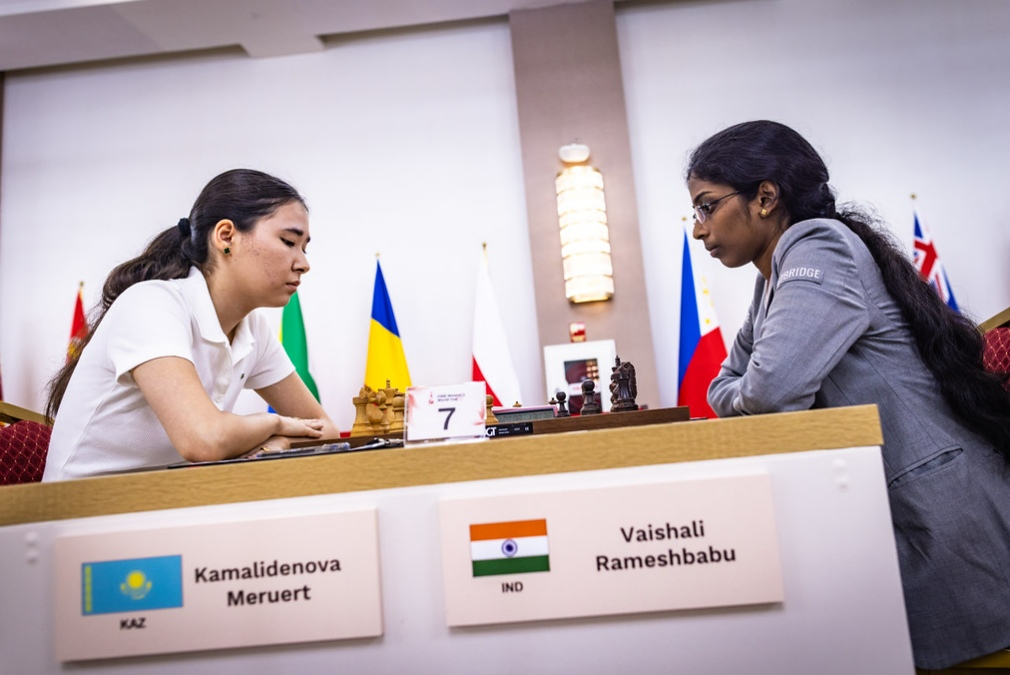
At one point, the Indian Grandmaster sacrificed a pawn for dynamic compensation. However, her opponent astutely returned the material, preserving equality. Following a series of careful exchanges, the players reached a completely balanced endgame, and the draw was agreed upon after seventy moves.
Similarly, GM Harika Dronavalli and GM Kateryna Lagno will proceed to tiebreaks tomorrow after their second draw this afternoon. Their game was solidly played, with both players achieving an impressive 96% accuracy and no significant mistakes.
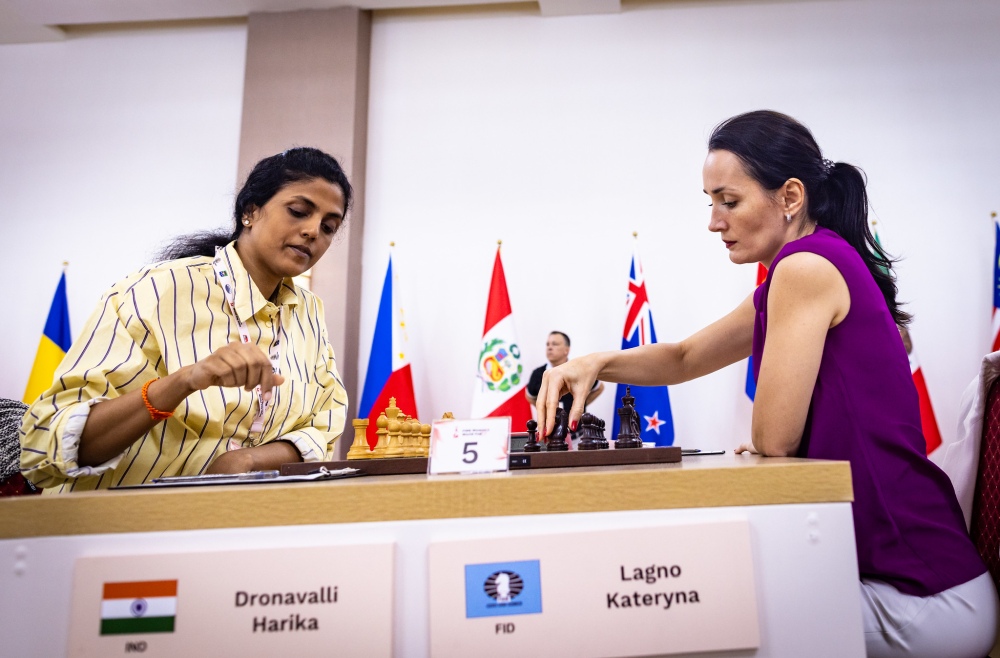
Follow the games live and watch the action with expert commentary provided by GM Valeriane Gaprindashvili and IM Almira Skripchenko on the FIDE YouTube channel.
Written by IM Michael Rahal (Batumi, Georgia)
Photos: Anna Shtourman
About the tournament:
Scheduled to take place from July 6th to July 28th, the 2025 FIDE Women’s World Cup will gather together in Batumi (Georgia) the world’s best female chess players. A total of 107 players from 46 different federations are set to participate in the event, including seventeen of the current top twenty!
Chess legends, seasoned professionals and emerging talents will play for the $50,000 first prize, in addition to three qualifying spots for the Candidates.
The full pairings tree and day-by-day results can be found on the Women’s World Cup website.
